
Handsome One, a Thoroughbred horse, age 33, was surrendered to a sanctuary when he retired from racing.

For nearly a decade, photographer Isa Leshko has traveled the US visiting sanctuaries that provide refuge to aging farm animals in an industry that slaughters over 8 billion land animals per year.
Her new book, Allowed To Grow Old, is a collection of intimate portraits of the animals she's met on her journeys. For each picture, Leshko approaches her subjects with the same dignity that she would a human being, taking the time to get to understand each of the animal's mannerisms and unique personalities. Since most of these rescues come from places of extreme cruelty such as slaughterhouses and factory farms, Leshko's special care and patience is crucial to building trust between animal and artist.
Here, Isa Leshko shares with BuzzFeed News some of her favorite portraits from her new book and discusses with us the importance of farm sanctuaries today.
What exactly is a farm sanctuary and who are the animals that make it to these safe havens?
There is a sign at the entrance to Pasado’s Safe Haven Sanctuary in Sultan, Washington, that reads, “Sweet creatures who pass this way once scared and alone… Now you are safe; now you are home.”
It perfectly encapsulates what makes farm sanctuaries special. Farm sanctuaries are dedicated to rehabilitating and providing permanent homes to rescued farm animals.
Each year, 50–70 billion animals are factory-farmed globally. Most are slaughtered within the first six months of their lives. It is nothing short of a miracle to be in the presence of an old farm animal.
Blue, an Australian Kelpie rescue dog, was a companion for 21 years.
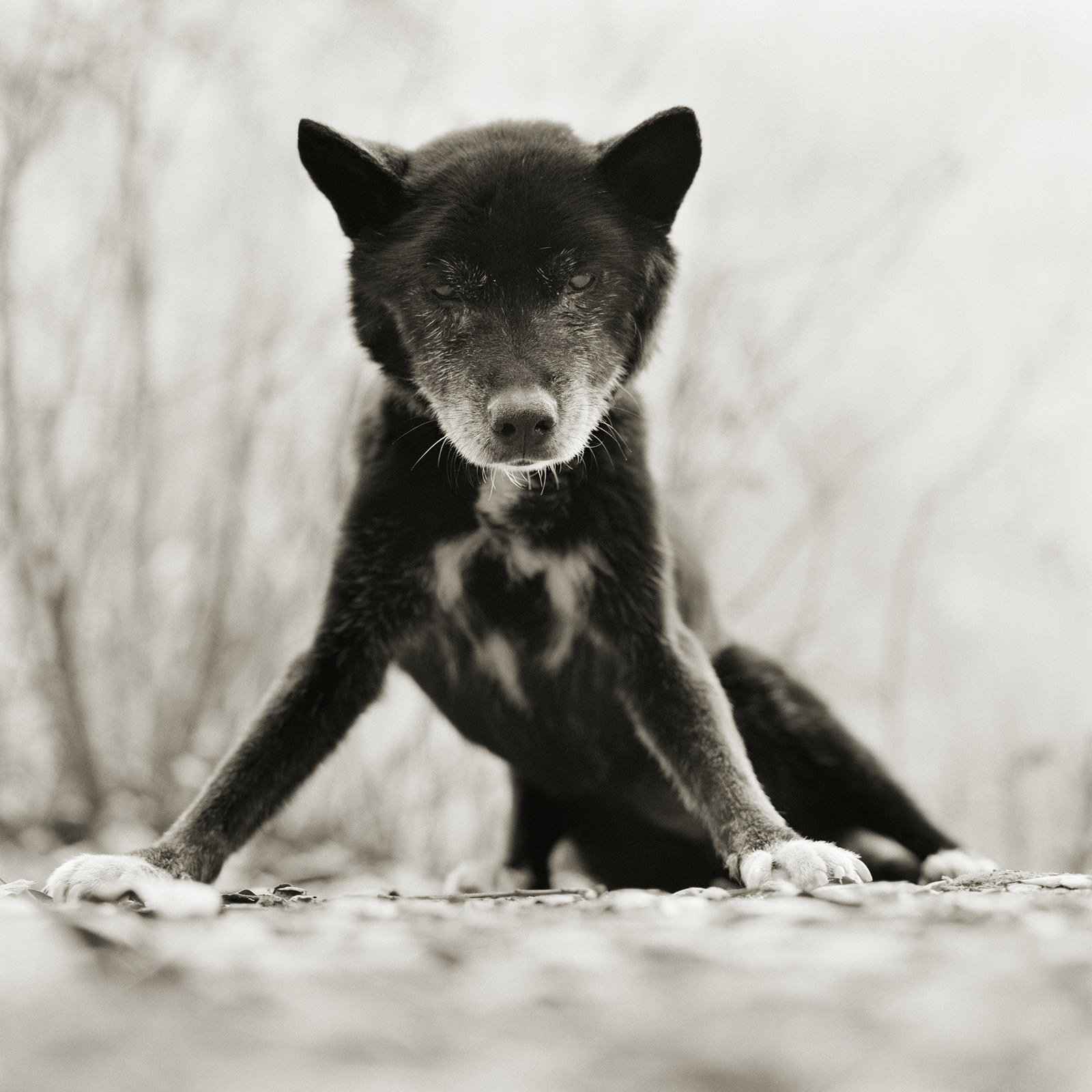
These animals usually come from horrific circumstances and are often near death when they reach these sanctuaries. Some are found wandering after they jumped from trucks transporting them to live markets or slaughterhouses. Others are rescued as part of cruelty investigations led by local law enforcement. There are some animals that have been found after they were left to die during hurricanes and floods while others were abandoned by farmers who went bankrupt. On rare occasions, the animals were beloved pets whose guardians could no longer care for them.
At these sanctuaries, the animals are treated like individuals. Each animal is named and receives specialized care tailored to their distinct preferences and needs. Rescued animals often require extensive veterinary care and rehabilitation. Because of this, many sanctuaries are located near veterinary schools where the animals receive remarkably sophisticated medical care. Some do not make it, but those who do survive are able to live out their lives in peace and comfort.
Sierra, a White Holland turkey, age 3, was rescued as a young poult from a commercial hatchery that supplies turkeys to factory farms.
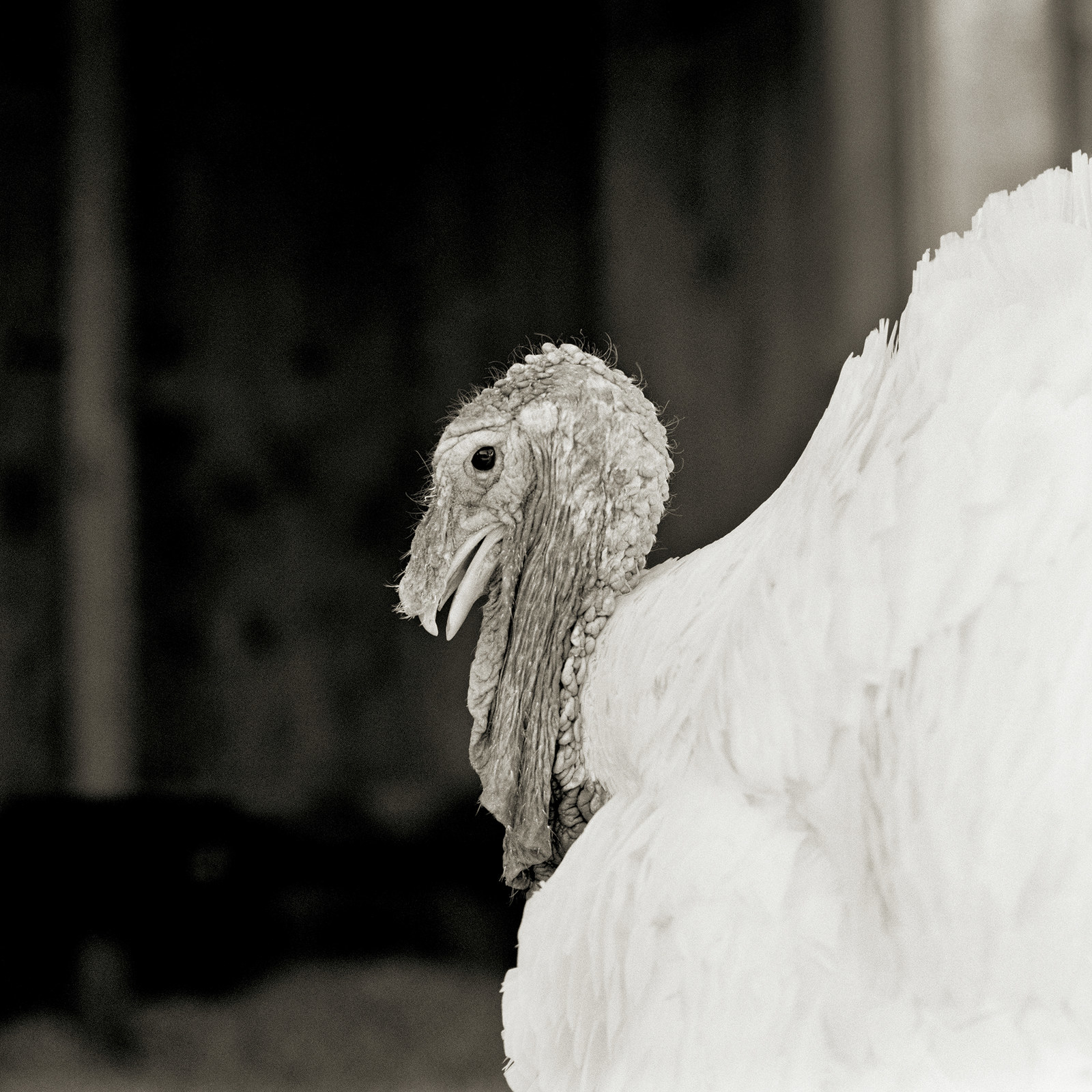
Animals who reside at sanctuaries are given ample space to engage in natural behaviors that are usually denied to animals on commercial farms. Chickens nap in the sun and take dust baths. Pigs roam pastures and soak in wallows. They sleep on fresh hay curled up with their porcine friends. That’s another key difference: At sanctuaries, farm animals are able to form friendships with other animals because they are not continually stressed by their cramped living conditions.
What were some of the obstacles you faced working alongside live animals?
I approached these images as portraits, so it was essential that the animals were as relaxed as possible in my presence. Rescued animals are wary of strangers — it often took time to develop a comfortable rapport with my subjects. I frequently spent a few hours lying next to an animal before making a picture.
Violet, a potbellied pig, age 12, was born with her rear legs partially paralyzed and was surrendered to a sanctuary because her guardian could not properly care for her special needs.
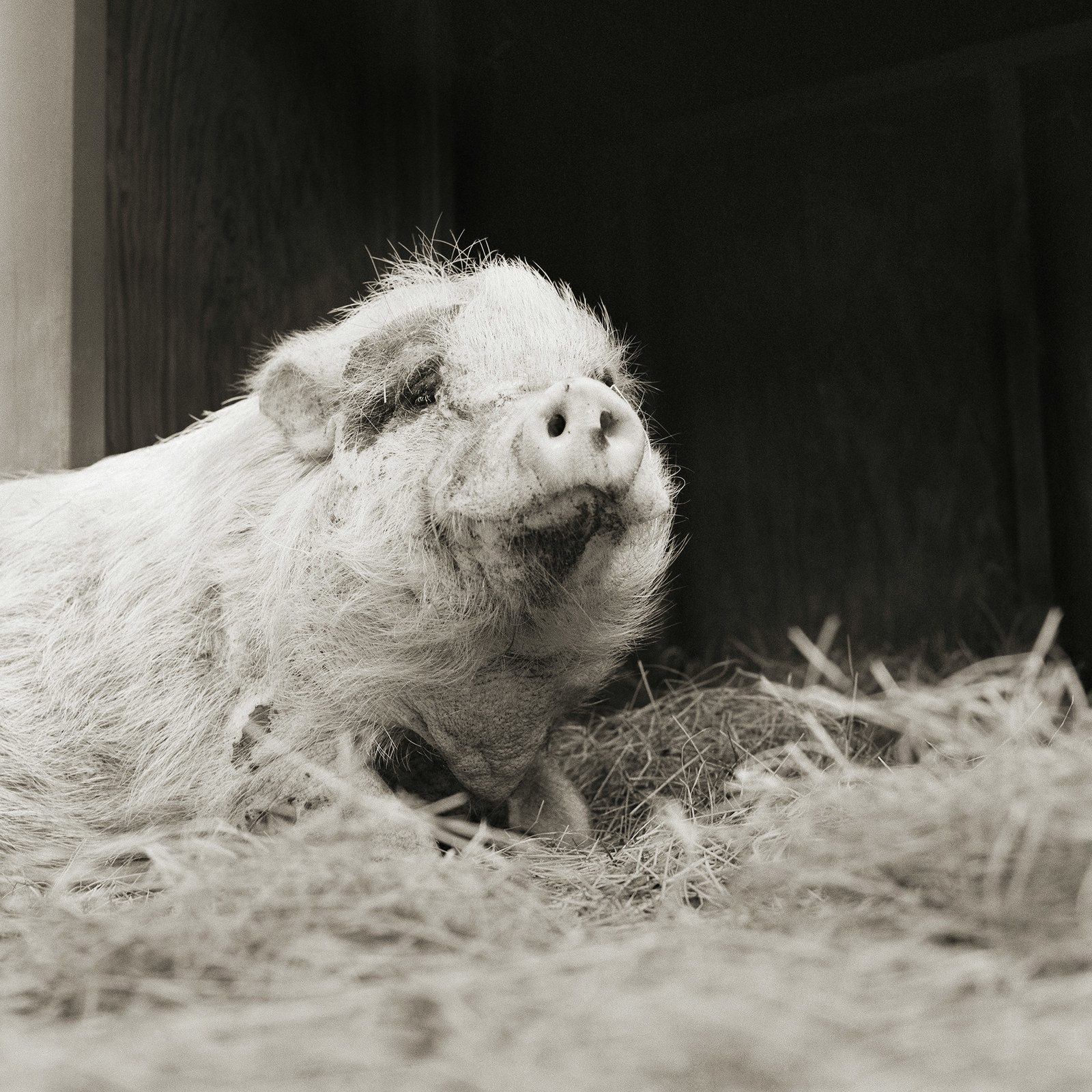
I kept my gear to an absolute minimum in order not to frighten the animals. I did not use any lighting equipment, which was sometimes challenging in dimly lit barns. I rarely used tripods in order to be as agile as possible. Even old animals can move quickly. I also didn’t pose the animals in particular locations, opting instead to follow them wherever they wanted to go.
I photographed the animals at eye level because I wanted people to gaze directly into their eyes when viewing these images. As a result, I spent many hours lying in animal scat, contorting my body into uncomfortable positions. I was pretty filthy and sore by the end of each day.
You've described this series as a response to your fear of growing old — how has completing this work help you to manage those fears?
Being around farm animals who defied all odds to reach old age taught me that aging is a luxury and not a curse. I hope that when I reach old age, I will face my decline with the same dignity that the animals in my portraits have shown.
This rooster, age unknown, was a factory farm survivor.
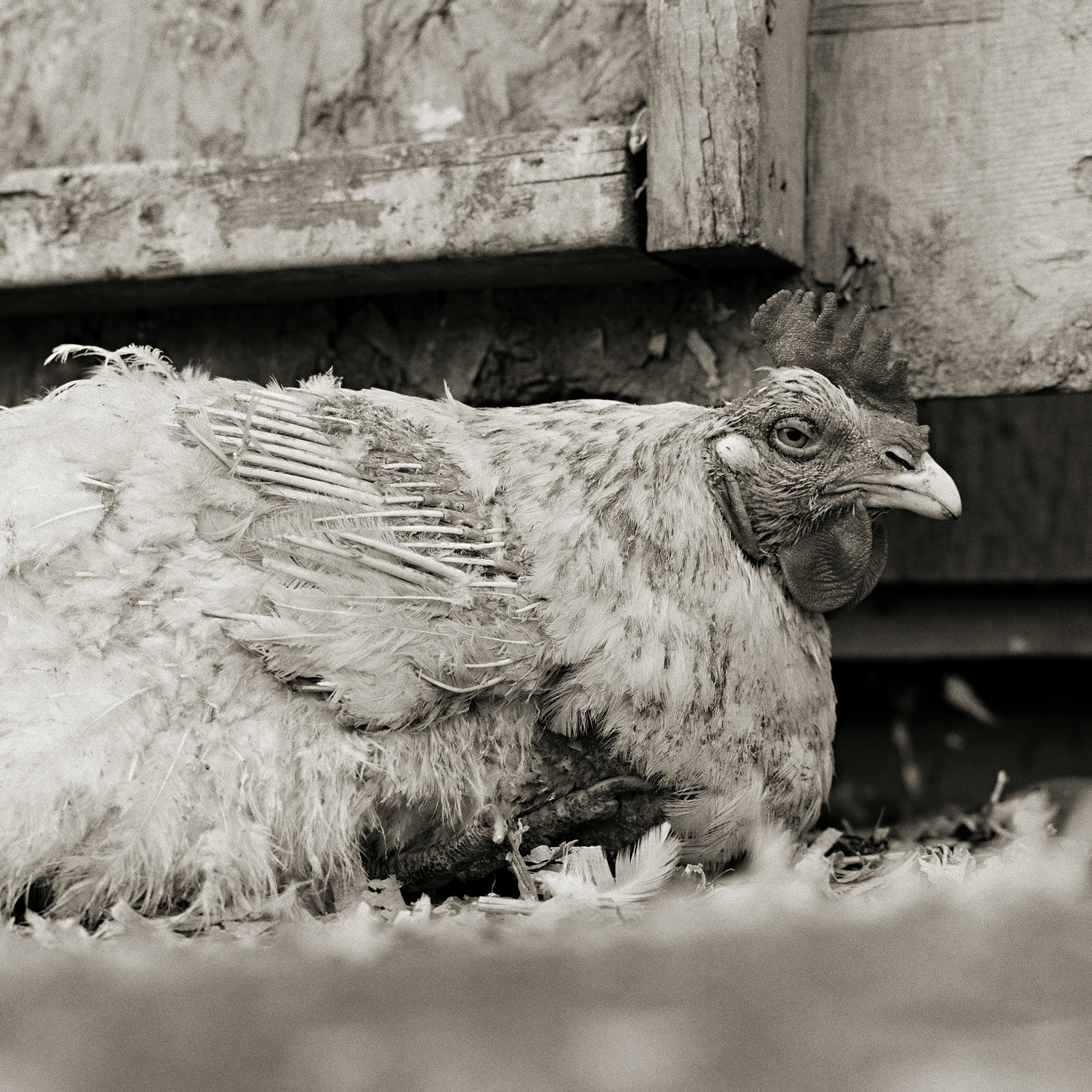
I was also inspired by the resilience of these animals. They endured trauma early in their lives, yet they healed both physically and emotionally. They eventually found peace — and even joy — in their lives. They grew to love their human caregivers despite having every reason to distrust humans. My images are testaments to their survival.
What about working with farm animals was surprising?
I had never spent time with farm animals prior to working on this project. I was surprised to learn how similarly they behave to the dogs and cats I have known. Sheep have pawed at me for attention the same way dogs do when you stop petting them. I've spent time cuddling with turkeys and chickens in my lap.
At Indraloka Farm Sanctuary in Mehoopany, Pennsylvania, I witnessed a young pig named Jeremiah jump with excitement upon seeing his favorite human friend approach his enclosure. He had arrived at the sanctuary near death and required round-the-clock care from Indra and her staff.
Then there was Melvin, an Angora goat who had lived at Farm Sanctuary’s shelter in Orland, California, who was one of the friendliest animals I have known. He greeted any visitor near his enclosure by putting his front hooves up on the fence. He was hard to photograph because he kept giving me head butts whenever I crouched on the ground. I spent much of my time with him laughing.
Abe, an Alpine goat, age 21, was surrendered to a sanctuary after his guardian entered an assisted living facility.
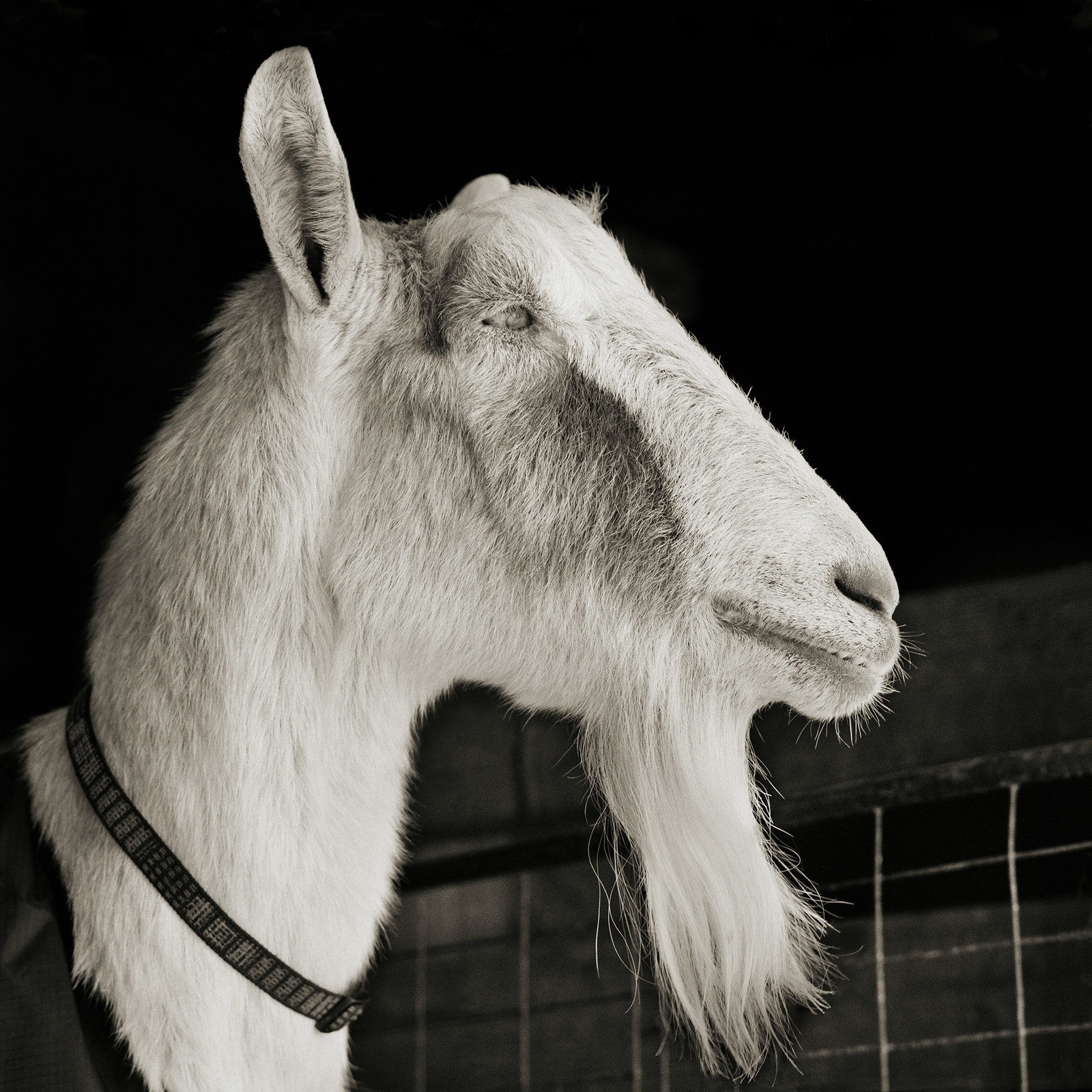
What do you hope people will take away from these images?
By revealing the dignity of elderly farmed animals, I invite viewers to consider what is lost when these animals are butchered in their youth. Animal products are ubiquitous, yet farm animals themselves are culturally invisible. Meat is marketed in a way that erases the presence of animals. Pig flesh is described as pork; cow flesh, beef. That is by design because it is easier to ignore the ethical implications of consuming animal products if you can forget they came from animals. I owe much of my thinking about this to Carol Adams’ brilliant book, The Sexual Politics of Meat.
My images bring farm animals out of the shadows and encourage people to consider the lives that they lead. I approached these images as portraits because I want viewers to recognize that farm animals are sentient beings with distinct personalities. That doesn’t mean that they are like the anthropomorphic characters in Charlotte’s Web. But they do think and feel.
Ash, a Broad Breasted White turkey, age 8, was a factory farm survivor.
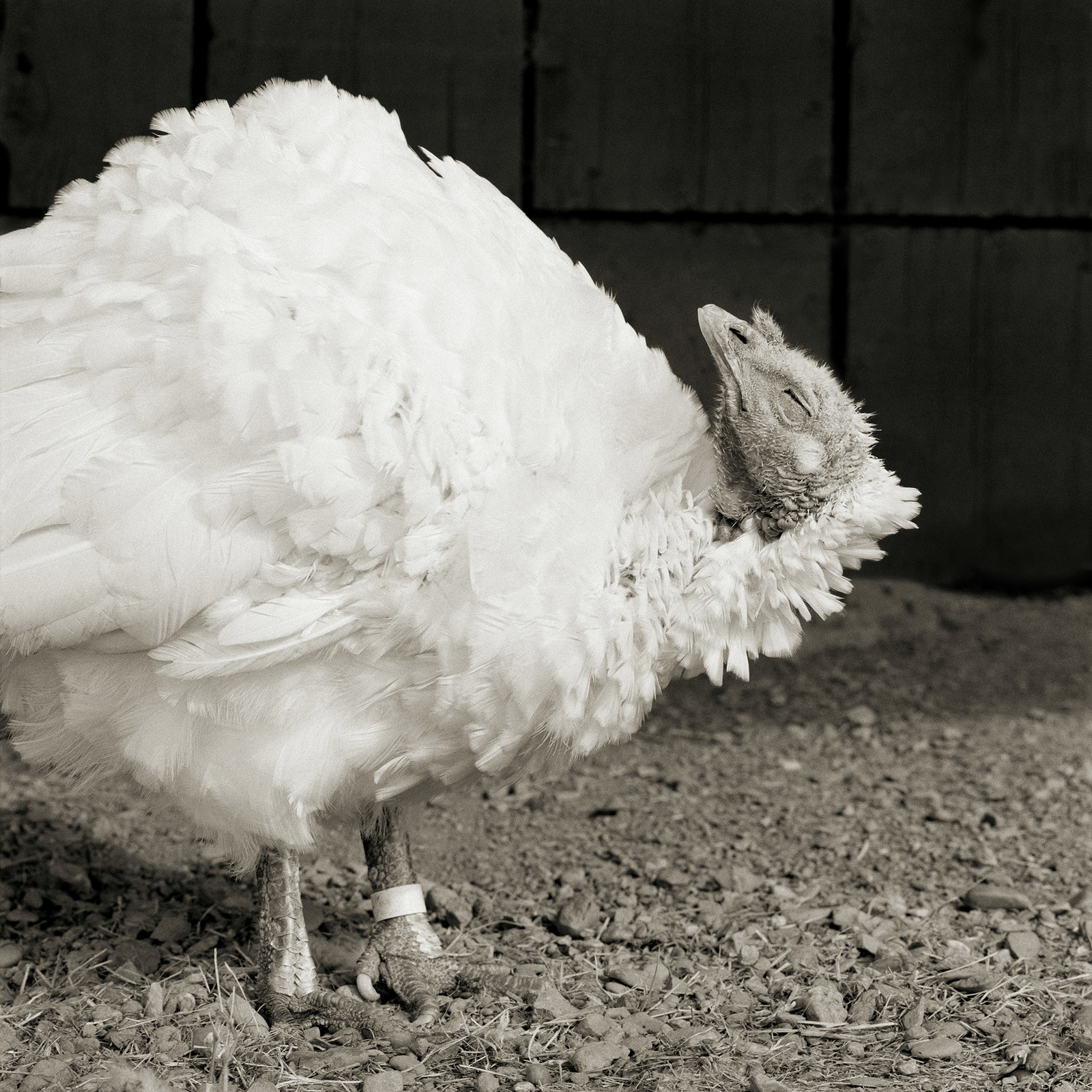
To pick up your copy of Allowed To Grow Old, visit isaleshko.com.

